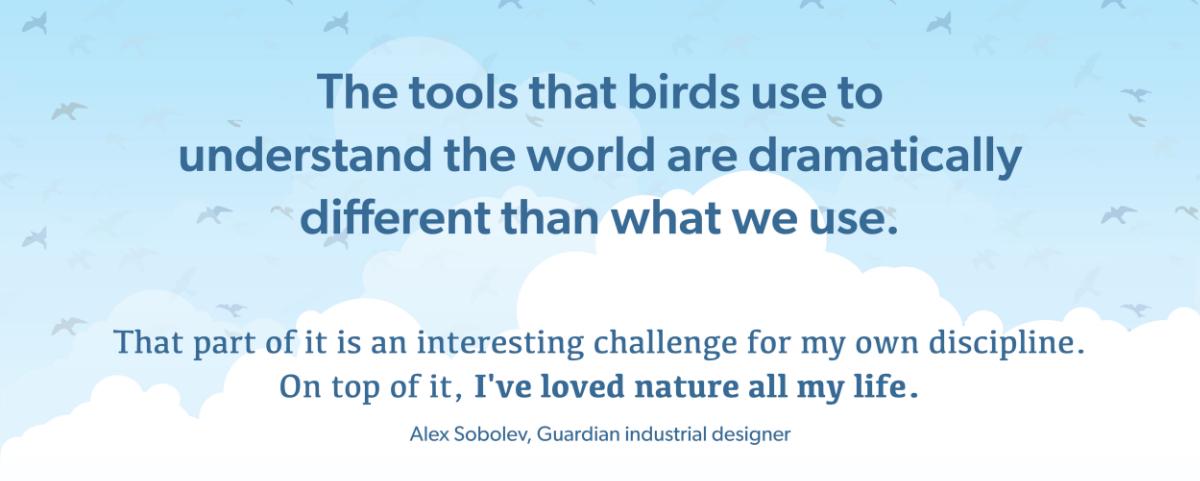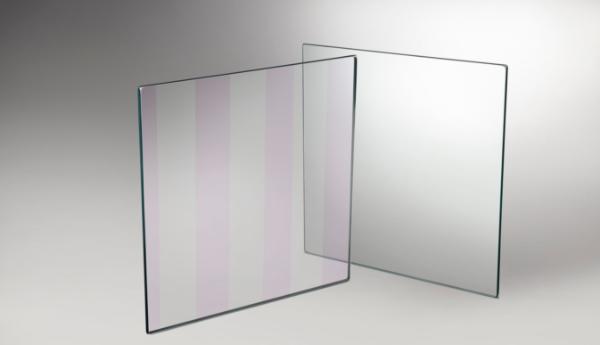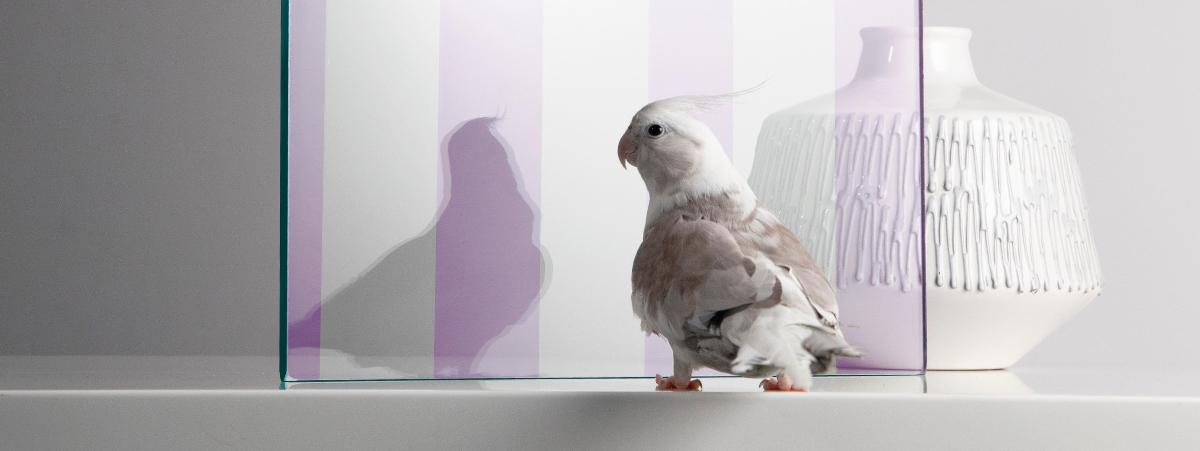This Glass Is for the Birds
How Guardian Glass developed glass that reduces bird-glass collisions around the world
One picturesque afternoon in Ann Arbor, Michigan, Sheldon Davis, Guardian Industries’ vice president of research and technology, took a stroll with Alex Sobolev, a Guardian industrial designer, through the city’s bustling downtown area adjacent to the University of Michigan. As birds chirped, squawked, and flitted between trees and buildings, Sobolev described a widespread – but virtually invisible – architectural issue that has affected not only urban skyscrapers but also more low-slung buildings in rural and suburban areas.
For humans, glass can be a beautiful thing, from the homes where we live to the buildings where we work to the public spaces where we congregate. For birds, Sobolev explained, it can be an unseen and lethal obstacle. The usual cause: a combination of artificial light and large glass windows that reflect trees or sky.
“One of the interesting challenges is that much of the attention goes to cities, especially around skyscrapers, but the problem that can lead to the greatest impact is usually low-rises in not fully urbanized areas where you still have a lot of habitat around that animals are going to fly through and pass through,” Sobolev said.
Translating between groups and species
For Sobolev, an active bird-watcher with a background in design, it became a personal mission that transformed itself into a broad effort for many teams across the company.
“One of the very challenging things in this issue is that no one speaks each other’s language. So, you have physicists who have to meet the aesthetic needs of architects,” he explained. “You have both of those groups who have to communicate with a non-human species in a way that they’ll understand and will be meaningful to them. And then you have an advocacy community who does not speak industry at all.”
For Sobolev, an active bird-watcher with a background in design, it became a personal mission that transformed itself into a broad effort for many teams across the company.
“One of the very challenging things in this issue is that no one speaks each other’s language. So, you have physicists who have to meet the aesthetic needs of architects,” he explained. “You have both of those groups who have to communicate with a non-human species in a way that they’ll understand and will be meaningful to them. And then you have an advocacy community who does not speak industry at all.”
It’s a pressing issue for scientists and industry alike. Researchers with Smithsonian and U.S. Fish and Wildlife Service found that an estimated 600 million migratory birds across the United States die after hitting high-rise structures every year. Other studies estimate that number could be closer to 1 billion across North America – and that does not even consider the number of native birds affected.
“Before we embarked on this project, we wouldn’t have guessed that there were as many collisions. We started talking about it more and it raised our awareness,” Davis said. “It really created a passion on the team to solve the problem and to do the right thing.”
Developing a solution
Engineers with Guardian Glass – a subsidiary of Guardian Industries, a Koch company – partnered with architects, industry groups, and the American Bird Conservancy (ABC), a nonprofit organization dedicated to conserving native birds and their habitats, to develop a high-performance glass that reduces bird strikes – new Guardian Bird1st™ glass. It works by breaking up reflectivity with high contrast ultraviolet stripes that birds can see but are barely visible to the human eye.
Guardian determined the effectiveness of the bird-friendly glass in three ways: ABC’s test tunnel; a field test pioneered by Daniel Klem Jr., Sarkis Acopian Professor of Ornithology and Conservation Biology at Muhlenberg College that sees how birds and other wildlife react to the glass in nature; and monitoring before and after installation with retrofit studies. It’s an iterative process that Sobolev and his team view as critically important to ensuring a quality product.
“What’s interesting about the bird issue is that you’re dealing with a non-human stakeholder and so the ways that you communicate with this creature are going to be different than with a human. The tools that birds use to understand the world are dramatically different than what we use. That part of it is an interesting challenge for my own discipline,” Sobolev said. “On top of it, I’ve loved nature all my life.”
That passion from Sobolev and others, combined with greater business interests and more news headlines about the growing problem in urban areas, spurred action at Guardian and beyond. “We want to make sure every Guardian Bird1st™ glass product we launch is more effective in preventing bird collisions with buildings,” Davis said.
Bryan Lenz, who manages ABC’s bird collisions mitigation campaign, emphasized the importance of collaboration between industry and environmental groups. “If private businesses aren't interested in this, nothing is ever going to happen because the conservation world is not going to be out actually making products to solve this issue,” Lenz said.
Through its partnership with the Insulating Glass Manufacturers Alliance (IGMA), Guardian facilitated discussions between the ABC and IGMA to raise awareness about the need for more innovation and testing to find solutions. These efforts are just the first step toward creating and implementing bird-friendly glass solutions that work for everybody – and every bird. “Engaging with any organization that champions an issue that impacts our environment and our industry is vital,” said IGMA executive director, Margaret Webb, noting that their testing expertise benefits manufacturers. “It’s a win-win relationship.”
The effort is working, said Christine Sheppard, ABC’s bird collisions campaign director, because partners in government, industry, and architecture are willing to adapt.
The architecture world is taking notice, too, as Bird1st™ has already received several awards upon its launch, including recognition from Architectural Record, Architect magazine, The Architect’s Newspaper, and Architectural Products magazine.
“We’re showing [people] that you don’t have to have buildings that look like bunkers or an ugly glass box; you can have a bird-friendly glass box. Architects don’t have to give up their artistic freedom. Planning departments don’t have to add tons of people in order to administer this sort of stuff,” Sheppard said.
For humans and birds alike, that’s a crystal-clear solution.





